August 10, 2023
Howard
Alright folks, if you’ve got a moment, I’d love to share something close to the heart. Over the years, the soulful strains of the blues have been a guide for many of us. It’s more than just music; it’s history, emotion, and raw power. So, with a nod to those legendary echoing guitar licks, I’ve curated a list of my personal favourite blues albums.
30: T-Bone Blues – T Bone Walker (1975)

T-Bone Walker, whose real name was Aaron Thibeaux Walker, has been credited with pioneering the electric guitar in blues music. Released in the ’50s, “T-Bone Blues” amalgamates some of his best work. Walker’s sophisticated style, marked by smooth, jazz-inflected licks, was groundbreaking. His song “Call It Stormy Monday (But Tuesday Is Just as Bad)” has become a blues standard, covered by many artists. His influence can be heard in later guitarists like B.B. King and Chuck Berry.
29: Revelator – Tedeschi Trucks Band (2011)

When two powerhouse musicians join forces, expectations run high, and “Revelator,” the debut album of the Tedeschi Trucks Band, did not disappoint. Released in 2011, the album is a collaborative brainchild of blues-rock guitarist Derek Trucks and soulful vocalist Susan Tedeschi, uniting their distinct musical talents into a mesmerizing blend of blues, rock, and soul. It’s more than just a collection of tracks — “Revelator” feels like a journey, from the gritty riffs of “Come See About Me” to the soulful introspection of “Midnight in Harlem.” Winning the 2012 Grammy Award for Best Blues Album, “Revelator” not only exemplifies the couple’s individual prowess but their remarkable synergy as a musical unit. The 11-piece band ensemble they’ve assembled for this project further adds layers of rich, sonic depth, making “Revelator” a modern blues-rock masterpiece.
28: The Sky Is Crying: The History of Elmore James (1965)

The “King of the Slide Guitar”, Elmore James, left an indelible mark on blues with his raw energy and piercing slide work. This compilation, released posthumously in 1965, gathers some of James’ most influential tracks. The title song, “The Sky Is Crying”, has been covered by numerous artists like Eric Clapton and Stevie Ray Vaughan, evidencing its lasting legacy. His innovative guitar techniques and unique voice cemented his place as one of the fathers of electric blues.
27: Bluesbreakers with Eric Clapton (1966)

Often referred to as the “Beano Album” because of the comic Clapton was reading on its cover, this 1966 release marked a significant turning point for British blues. Eric Clapton’s fiery guitar work, combined with John Mayall’s vocal and harmonica contributions, created an electrifying sound. Their rendition of “All Your Love” and “Ramblin’ on My Mind” brought a fresh energy to traditional blues, bridging the Atlantic divide and re-introducing the blues to American audiences through a British lens.
26: Standing My Ground – Clarence “Gatemouth” Brown (1989)

Dive into the raw and authentic world of Clarence “Gatemouth” Brown with “Standing My Ground”. This gem of an album showcases Gatemouth’s incredible versatility as he deftly weaves between blues, country, jazz, and even Cajun. A Texas-born virtuoso, Brown refuses to be pigeonholed, and “Standing My Ground” stands testament to that spirit. With his fiery guitar riffs and unique voice, Gatemouth offers a journey that’s both an education in the blues and a refreshing deviation from it.
25: Don’t Explain – Beth Hart & Joe Bonamassa (2011)

When the smoky, soul-drenched vocals of Beth Hart met the unparalleled guitar virtuosity of Joe Bonamassa, a musical combustion was inevitable. “Don’t Explain,” released in 2011, is a testament to their combined prowess. Instead of aiming for original compositions, the duo took a different route, diving deep into the reservoir of soul and blues classics, delivering them with a fresh, impassioned perspective. From the sultry reimagining of Billie Holiday’s “Don’t Explain” to the bluesy weight of “I’d Rather Go Blind,” every track is a lesson in musical reverence and reinvention. The juxtaposition of Hart’s raw emotive power with Bonamassa’s intricate guitar solos makes this album not just a collection of covers, but a rebirth of classics through the lens of two of the most dynamic contemporary blues artists.
24: The Pious Bird of Good Omen - Fleetwood Mac (1969)

“The Pious Bird of Good Omen” is a compilation album by the British blues rock band Fleetwood Mac, released in 1969. The album is a collection of the band’s early singles, B-sides, and other tracks from the Peter Green era, showcasing their blues-infused sound.
The title of the album is derived from a line in the traditional blues song “Hellhound on My Trail” by Robert Johnson. The compilation features some of Fleetwood Mac’s most memorable tracks, including “Albatross,” a haunting instrumental piece that became the band’s only UK number one single.
23: Live At The Regal – B.B. King (1964)

Often hailed as one of the greatest live blues albums ever, “Live At The Regal”, recorded in 1964, captured B.B. King in his prime. The interaction between King and his audience, the sheer magnetism of his performance on tracks like “Sweet Little Angel” and “You Upset Me Baby”, offers a masterclass in live blues performance. It’s an album that influenced many future guitarists, from Eric Clapton to John Mayer.
22: The Paul Butterfield Blues Band – The Paul Butterfield Blues Band (1965)

Debuting in 1965, this album fused traditional blues with the energy of the burgeoning rock ‘n’ roll movement. Paul Butterfield’s intense harmonica playing and the legendary Mike Bloomfield’s guitar work shone brightly on tracks like “Born in Chicago” and “Look Over Yonders Wall”. By integrating the blues with modern sounds of the time, they played a pivotal role in popularising the blues among younger American audiences.
21: Live in Cook County Jail – B.B. King (1971)
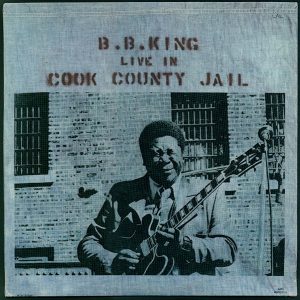
B.B. King’s 1971 live performance in Cook County Jail in Chicago is a masterclass in blues performance. King’s rapport with the inmates, his mesmerising guitar work on “Lucille”, and his impassioned vocals on tracks like “How Blue Can You Get” make this album a monumental achievement in live recordings. It encapsulates the very essence of blues: raw emotion, shared experiences, and the transformative power of music.
20: I Wanna Get Funky – Albert King (1973)
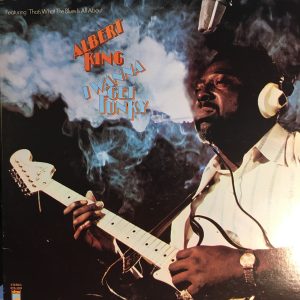
In the world of blues, Albert King has always held a special place with his distinct guitar playing and powerful voice. “I Wanna Get Funky,” released in 1974, encapsulates a period in his career when King was branching out, embracing the electric verve of funk. The title track itself is an infectious call to the dancefloor, while other gems on the album, like “Playing on Me” and “Walking the Back Streets and Crying,” show King’s unparalleled ability to convey deep emotion. It’s a compelling testament to his musical versatility, blending the raw intensity of traditional blues with the vibrant energy of funk. The album remains a crucial listen, illustrating a master at work, bending genres while remaining true to his roots.
19: Born Under A Bad Sign – Albert King (1967)

Released in 1967, this album brought Albert King significant fame and showcased his distinct, smooth guitar style. The title track “Born Under a Bad Sign” has since become a blues standard, covered by countless artists. King’s soulful bending of strings and his ability to conjure a vast range of emotions from his guitar make this record a defining moment in blues history.
18: Axis: Bold as Love – Jimi Hendrix (1967)

“Axis: Bold as Love” is the second studio album by the legendary English-American guitarist Jimi Hendrix, released in 1967. This album showcased Hendrix’s musical versatility and innovative guitar techniques, cementing his status as a groundbreaking artist. Some interesting facts about the album include the iconic cover art featuring a vibrant collage of Hendrix, created by Roger Law, and the experimental nature of the music, incorporating elements of psychedelia, blues, and rock. Notably, the title track “Bold as Love” is praised for its intricate guitar work and lyrical depth. The album marked another milestone in Hendrix’s influential and brief career, leaving an indelible impact on the world of music. The ending song will blow your mind!
17: Ice Pickin’ – Albert Collins (1978)

Released in 1978, “Ice Pickin’” displayed Albert Collins’ distinctive “icy” guitar sound, earning him the moniker “The Master of the Telecaster”. With his capo and finger-picking style, Collins crafted tracks like “Honey Hush!” and “Cold, Cold Feeling” that stand out in blues history. His unique sound was an influence on many later blues and rock guitarists, making this album an essential listen.
16: Irish Tour ’74 – Rory Gallagher (1974)

Capturing the raw energy of Rory Gallagher, this live album from 1974 is a testament to his unparalleled stage presence and guitar prowess. An Irish blues-rock prodigy, Gallagher’s performances were explosive, as evidenced by tracks like “Cradle Rock” and “Who’s That Coming”. The album remains a snapshot of an artist at the peak of his powers, mesmerising audiences with sheer talent and passion.
15: Live at Montreux 1982 & 1985 – Stevie Ray Vaughan And Double Trouble

“Live at Montreux 1982 & 1985” is an album capturing two live performances by Stevie Ray Vaughan and Double Trouble at the Montreux Jazz Festival. These performances, one from 1982 and the other from 1985, are significant for several reasons and offer a fascinating glimpse into the career of one of the most revered guitarists in the history of blues and rock music. Here are some interesting facts about these iconic performances and the album:
Stevie Ray Vaughan’s Debut at Montreux (1982): The 1982 performance was Vaughan’s first appearance at the Montreux Jazz Festival. It was notable because the audience’s reaction was mixed; while his performance enthralled many, it also drew boos from some purists who were unaccustomed to Vaughan’s intense, electric blues style at a festival that traditionally favored acoustic jazz.
A Turning Point in Vaughan’s Career: Despite the mixed reaction in 1982, Vaughan’s performance caught the attention of several music legends present at the festival, including David Bowie and Jackson Browne. Bowie was so impressed that he later invited Vaughan to play on his “Let’s Dance” album, significantly boosting Vaughan’s exposure and career. Jackson Browne offered Vaughan free recording time at his studio, which Vaughan used to record much of his debut album, “Texas Flood.”
Triumphant Return in 1985: Stevie Ray Vaughan and Double Trouble returned to Montreux in 1985, this time to a much more receptive audience. The band’s return was a triumphant moment, showcasing Vaughan’s growing popularity and the music world’s increasing acceptance of his electrifying blend of blues, rock, and soul.
Collaborations and Guest Appearances: The 1985 performance featured guest appearances by blues legends Johnny Copeland and Stevie’s brother, Jimmie Vaughan, highlighting the respect Vaughan had earned from his peers and his willingness to collaborate and celebrate the blues tradition.
14: Morrison Hotel – The Doors (1970)

Released in 1970, “Morrison Hotel” marked The Doors’ passionate return to their bluesy rock ‘n’ roll roots. Divided into “Hard Rock Cafe” and “Morrison Hotel” sides, the album bursts with raw energy, epitomized in tracks like “Roadhouse Blues” and “Peace Frog”. With Jim Morrison’s distinctive vocals, Krieger’s masterful guitar, Manzarek’s haunting keyboards, and Densmore’s rhythmic drum beats, this record wasn’t just a comeback; it was a bold statement of The Doors’ enduring artistry, encapsulated in an iconic snapshot of the real Morrison Hotel on the album cover.
13: Still Got the Blues – Gary Moore (1990)

Released in 1990, “Still Got the Blues” marked a shift in Gary Moore’s career from hard rock to a more soulful blues sound. The title track became an instant classic, showcasing Moore’s emotional depth both as a vocalist and a guitarist. His renditions of classics like “Oh Pretty Woman” and collaborations with blues legends like Albert King and Albert Collins on this album underlined his reverence for the genre.
12: At Fillmore East – The Allman Brothers (1971)

“At Fillmore East” by The Allman Brothers Band is a live double album recorded in March 1971 at the iconic Fillmore East venue in New York City. Released later that year, the album is widely regarded as one of the greatest live recordings in the history of rock music.
The Allman Brothers Band, led by the exceptional guitar work of Duane Allman and Dickey Betts, blended elements of blues, jazz, and Southern rock in their performances. “At Fillmore East” captures the band’s improvisational prowess, featuring extended jam sessions and virtuosic instrumental passages.
Notable tracks on the album include the epic “Whipping Post” and the iconic “In Memory of Elizabeth Reed,” showcasing the band’s ability to create intricate, soulful, and dynamic musical landscapes. Duane Allman’s slide guitar and the interplay between the dual lead guitars became defining elements of the band’s sound.
Tragically, “At Fillmore East” would be one of Duane Allman’s final recordings, as he died later in 1971. The album, however, immortalized his contributions and solidified The Allman Brothers Band’s place in rock history.
11: Texas Flood (Legacy Edition) – Stevie Ray Vaughn (1983)

Stevie Ray Vaughan burst onto the blues-rock scene with “Texas Flood” in 1983. This album, rich with Vaughan’s fiery guitar licks and soulful vocals, was a revitalisation of the blues genre during a time when rock and pop dominated the charts. With iconic tracks like “Pride and Joy” and the title track “Texas Flood”, Vaughan showcased his immense talent and passion for the blues, securing his place as one of the great guitarists of his generation.
10: I’ll Play The Bles For You – Albert King (1972)

1972 saw the release of one of Albert King’s most celebrated albums, “I’ll Play The Blues For You.” This soul-tinged blues masterpiece boasts tracks that blend introspective lyrics with King’s indomitable guitar prowess. The title track remains a cornerstone of blues playlists, showcasing King’s ability to convey deep emotions with a singular guitar note. Produced by the legendary Stax Records, the album seamlessly intertwines blues with touches of funk and R&B, culminating in a sound that’s unmistakably Albert King. His passionate, raspy voice, paired with his unique guitar tuning, assures that every song resonates with listeners long after the final note.
9: Layla and Other Assorted Love Songs – Derek & the Dominoes (1970)

This double album, released in 1970, marked the crystallisation of Eric Clapton’s fascination with the blues. The title track, “Layla”, was inspired by Clapton’s infatuation with Pattie Boyd, then-wife of his close friend George Harrison. The album is also significant for its collaboration with Duane Allman, a slide guitar legend. The intersection of Allman’s Southern rock style and Clapton’s British blues resulted in a masterpiece that is celebrated to this day. A blend of original tracks and covers, it showcases the blues’ raw emotional intensity.
8: John Mayer Where the Light Is – Live in Los Angeles (2008)

John Mayer – Live in Los Angeles” captures the essence of the acclaimed American singer-songwriter’s live performances. Released in 2008, this live album showcases a quality trio made up of Pino Palladino, Steve Jordan and John Mayer’s exceptional guitar skills, soulful vocals, and engaging stage presence. Recorded at the Nokia Theatre in Los Angeles during his 2007 tour, the album features renditions of his popular hits like “Gravity,” “Slow Dancing in a Burning Room,” and “Waiting on the World to Change.” But there’s also a lot of blues tracks in the there!
The intimate setting of the live recording allows listeners to experience the raw energy and emotion that John Mayer brings to his performances. The setlist is a blend of blues, rock, and pop, reflecting the diverse musical influences that characterize Mayer’s style.
7: Unplugged – Eric Clapton (1992)

Recorded for the MTV Unplugged series, the performance showcased Clapton’s acoustic interpretations of some of his most iconic songs. The setlist included classics like “Layla,” “Tears in Heaven,” and “Old Love.”
The album not only highlighted Clapton’s exceptional guitar skills but also demonstrated his ability to reinvent his own material in an acoustic setting. The stripped-down arrangements and intimate atmosphere of the performance resonated with audiences, earning Clapton critical acclaim and commercial success.
6: At Last! – Etta James (1960)
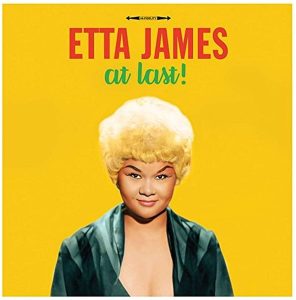
Etta James’ powerful voice took center stage in her 1960 debut album. From the sweeping orchestration of the title track, “At Last”, to her raw, emotional rendition of “I Just Want to Make Love to You”, James showcased her versatility and cemented her status as a blues and soul legend. This album stands as a testament to her enduring talent and influence.
5: Briefcase Full of Blues – The Blues Brothers (1978)
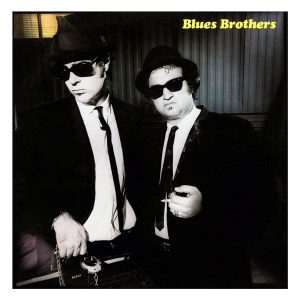
An unexpected hit when it came out in 1978, this live album by The Blues Brothers (a.k.a. Dan Aykroyd and John Belushi) was a tribute to classic blues and soul. Far from just a comedic act, the duo and their band delivered genuinely passionate performances. Songs like “Soul Man” and “Rubber Biscuit” display the duo’s genuine love for the blues, and the album played a significant role in reintroducing classic blues numbers to a new generation.
4: Burglar – Freddie King (1974)
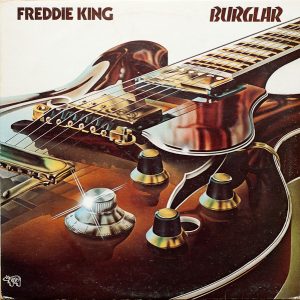
Freddie King, one of the “Three Kings” of electric blues guitar, came out with “Burglar” in 1974, bringing forth a rock-infused blues sound. His soulful voice, combined with intricate guitar solos, set a standard for blues-rock artists. Songs like “Sugar Sweet” and “She’s a Burglar” are exemplary of King’s dynamic style, blending gritty guitar work with an infectious rhythm.
3: Exile on Main St. – Rolling Stones (1972)

Exile on Main St.” is a landmark double album by the iconic English rock band, The Rolling Stones, released in 1972. Widely regarded as one of their greatest works, the album is a sprawling masterpiece that blends various musical styles, including rock, blues, country, and soul. The recording sessions took place in the basement of Keith Richards’ villa in the south of France, contributing to the album’s gritty and raw sound.
2: LA Women – The Doors (1971)

“L.A. Woman,” released in 1971, isn’t wholly a blues album, but its deep roots in blues are unmistakable, interwoven with the psychedelic rock that The Doors became renowned for. This was the final studio album from The Doors with the enigmatic Jim Morrison leading the charge. The record stands as a vibrant snapshot of Los Angeles in the early ’70s. Tracks like the eponymous “L.A. Woman” deliver a rhythmic journey through the city’s avenues, while “Riders on the Storm” serves as a haunting, atmospheric masterpiece that showcases Morrison’s lyrical prowess. Regrettably, this album preceded Morrison’s untimely demise in Paris by just a few months, but “L.A. Woman” endures, a testament to The Doors’ innovative blend of blues influences and psychedelic overtones.
1: Stone Crazy - Buddy Guy (1970)
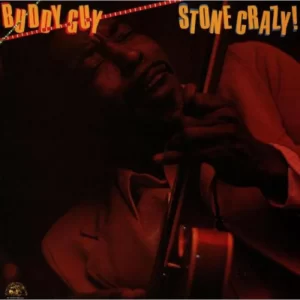
If you’re craving authentic blues, this is the album to listen to! “Stone Crazy!” by Buddy Guy, recorded in 1979, is a testament to Guy’s raw and electrifying guitar work and soulful vocals. Known for its intense emotion and powerful delivery, the album features standout tracks like “I Smell a Rat” and “Outskirts of Town.” Recorded in Condorcet Studios, Toulouse, France, “Stone Crazy!” showcases Guy’s unparalleled ability to blend traditional blues with his unique, fiery style. Its raw, unfiltered energy and masterful storytelling make “Stone Crazy!” an essential listen.
Bonus!
You may also like our blues album, the self-titled album by Thomas Heppell!

Howard Head
I turn confused bass enthusiasts into bass gods through a simple and logical process.

















